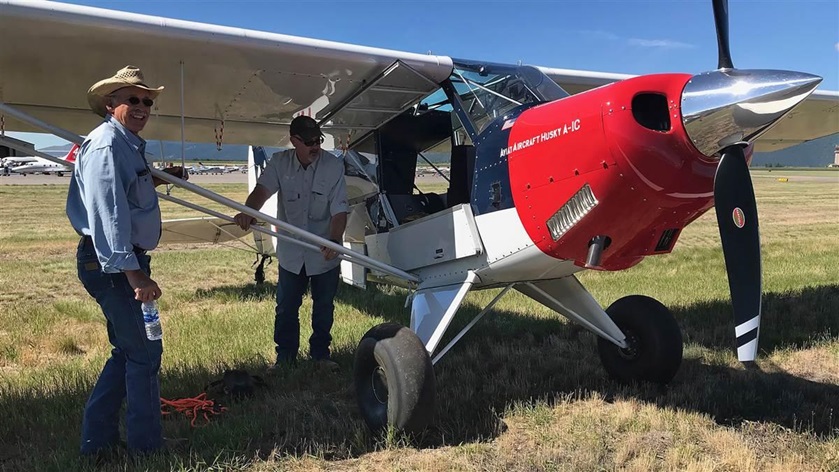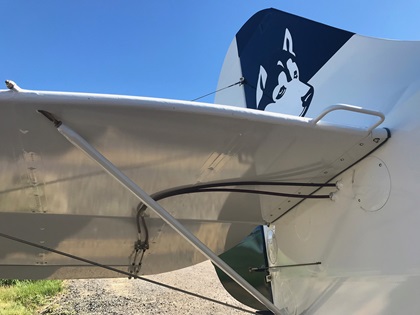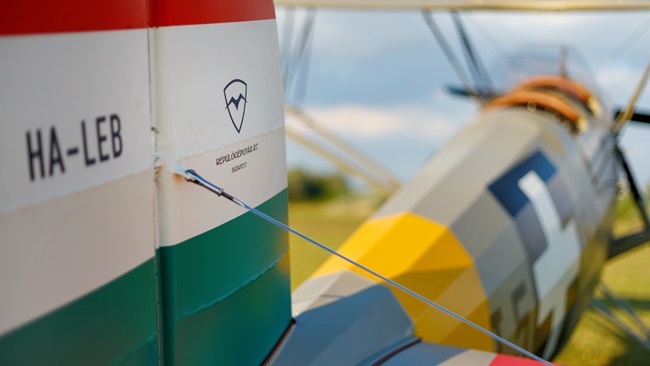Old dog, new tricks
Flying the 2018 Husky A–1C
The new Aviat Husky A–1C contains a laundry list of seemingly small changes that, when taken together, significantly improve the experience of flying the stalwart backcountry aircraft.

“This is a major evolution for the Husky,” said Scott Musser, an Aviat Aircraft sales representative who has owned and flown Husky airplanes for 20 years. “These changes have been in the works for years, and now they’re here.”
The biggest alteration replaces the airplane’s bungee elevator trim system with a more traditional tab. The result is a lighter elevator touch that better matches the ailerons for a more harmonized control feel.
The elevator trim wheel is in the same location on the left side of the cockpit, and two actuator cables move the tab on the elevator.

The cables and trim tab aren’t as clean-looking or as aesthetically pleasing as the Husky’s traditional tail—but the new airplane’s superior flying qualities more than make up for it.
With the old bungee system, Husky pilots would typically apply full nose-up trim and hold forward stick on final to be properly trimmed for the landing flare. The practice works, but it feels odd and takes some getting used to. The new trim system is far more intuitive, and allows pilots to do what they do in other airplanes: Trim for their final approach speed, then flare to land with steadily increasing back pressure all the way to touchdown.
Other welcome changes have to do with the front seat. It tilts forward, which makes climbing in and out of the back seat far simpler and less gymnastic. The seat also slides fore and aft, and it can tilt and move simultaneously. The improvements can accommodate much taller pilots. Husky seats used to be fixed in place; the only way to alter the seating position was to change to thinner or thicker cushions.

The new Husky’s performance is unchanged. Full-flap stalls are still gentle affairs that take place at an almost impossibly slow 40 miles per hour indicated, and low cruise is 120. The landing gear with independent shock absorbers is firm but forgiving, and the airplane obediently performs three-point and wheel landings with equal enthusiasm.
The Husky retails in the $300,000 price range and has been the Cadillac of backcountry flying ever since it was introduced in 1987. Aviat has made subtle refinements over the years, with most of them having to do with gross weight increases. The new elevator trim and seat systems are the biggest changes since 2005, when Aviat introduced a new wing that did away with aileron spades and increased the flap area.
Aviat faces increasing competition from CubCrafters with its FAA-certified X-Cub as well as a host of Experimental-category designs—and the improvements to the Husky in 2018 show Aviat is determined to play a leading role in the adventure flying market it did so much to create.




